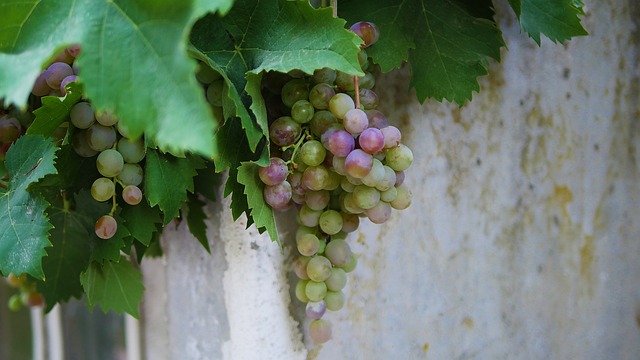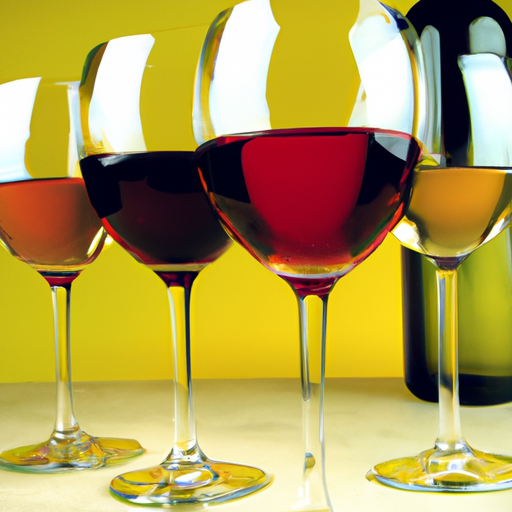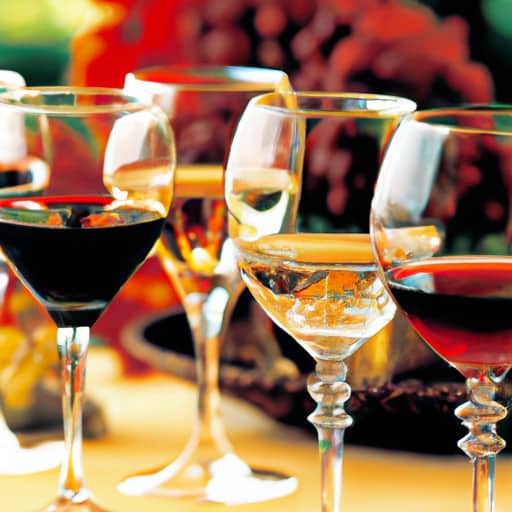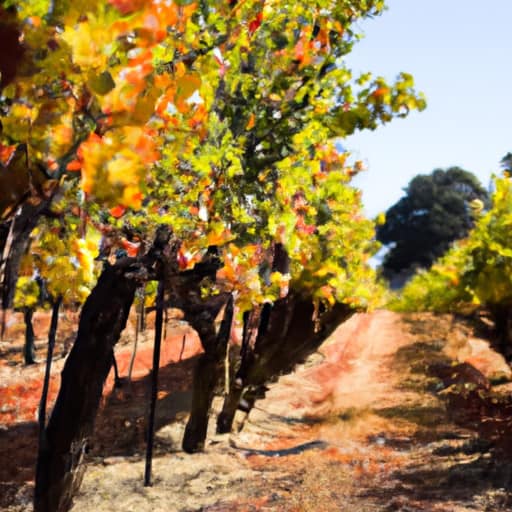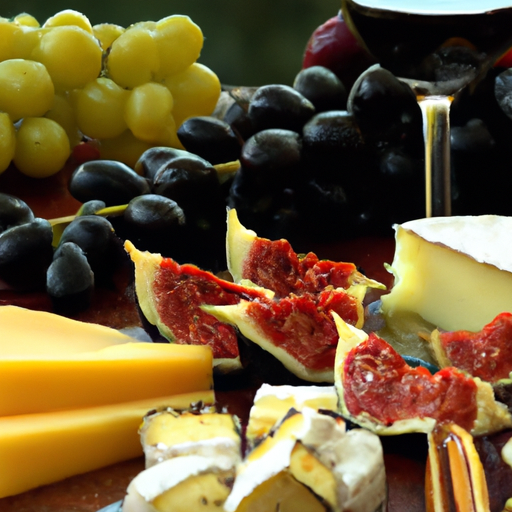From Grape to Glass: The Winemaking Process Demystified
Have you ever wondered about the process of making wine? How do those delicious grapes transform into the bottle of wine you enjoy? Well, let me demystify the winemaking process for you. By the end of this article, you’ll understand the art and science behind it.
The process of making wine involves a series of steps. It starts with harvesting the grapes at the perfect moment, considering factors like sweetness, flavor, and acidity. Once the grapes are harvested, they are crushed to extract the juice. This can be done mechanically or by feet, depending on the winemaker’s preference. The end result of this process is what we call “must,” which is fresh grape juice.
Next comes fermentation, where the sugar in the grapes is transformed into alcohol. Depending on the desired outcome, this process can take anywhere from a week to a month. Once fermentation is complete, the wine goes through a clarification process to remove tannins, proteins, and dead yeast. This is done using filters or fining agents like clay.
Finally, the wine goes through the aging and bottling stages. Some wines can be bottled immediately, while others benefit from additional aging in oak barrels, stainless steel tanks, or the bottle itself. The choice of the aging method depends on the winemaker’s vision for the final product.
So, as you can see, making wine is a fascinating process that combines art and science. And the best part? If you make your own wine at home, you have complete control, ensuring a natural and additive-free product. In our upcoming article, we’ll explore the benefits of homemade wine and how you can get started on your own winemaking adventure. Stay tuned!
From Grape to Glass: The Winemaking Process Demystified
Wine-making is an art that involves a lot of science. Transforming grape juice into wine is a carefully orchestrated journey that requires meticulous attention to detail. From the moment the grapes are harvested to the final step of bottling the wine, every stage plays a crucial role in determining the quality and characteristics of the finished product. In this article, we will explore the different steps involved in winemaking and shed light on the various factors contributing to creating a fine wine. So grab a glass of your favorite wine, and let’s dive into the world of winemaking!
Harvesting
Factors to consider in grape picking
The first stage in the winemaking process is harvesting the grapes. Picking the grapes at the right moment is essential as it directly affects the quality of the wine. Factors such as sweetness, flavor, and acidity are crucial in determining when the grapes should be harvested. The ideal time to harvest grapes is when they have reached optimal ripeness, meaning they have enough sugar content to produce alcohol, balanced acidity to provide structure and desirable flavors. Winemakers carefully monitor the grapes to ensure they are picked at their peak flavor.
Determining the right moment to harvest grapes
Determining the right moment to harvest the grapes involves a combination of science and experience. Winemakers regularly test the grapes for sugar levels and acidity to track their ripening process. They also rely on sensory evaluation to determine the grapes’ flavors and aromas. The decision to harvest is often based on a balance of these factors, aiming to capture the grapes’ full potential. Once the grapes have been carefully selected, they are ready to undergo the next stage of the winemaking process.
Crushing
Mechanical vs. foot crushing
After the grapes have been harvested, they must be crushed to release their precious juice. Traditionally, foot crushing was the method of choice, as it allowed winemakers to gently break the grapes and extract the juice without extracting unwanted tannins from the grape skins. Nowadays, mechanical crushing has become more popular due to its efficiency. Mechanical crushers use rollers or presses to break the grapes and extract the juice. While both methods have advantages, mechanical crushing tends to be more hygienic and time-efficient.
The outcome: fresh grape juice
Regardless of the method used, the outcome of the crushing stage is fresh grape juice called “must.” Must contains the grape juice, skins, seeds, and pulp. The must is transferred to fermentation vessels where the winemaking process’s next step occurs.

Fermentation
Transformation of sugar into alcohol
Fermentation is the magical process that transforms grape juice into wine. During fermentation, yeast consumes the sugar in the grape juice and converts it into alcohol. This process occurs naturally in the presence of yeast, but winemakers often introduce specific strains of yeast to control the fermentation and achieve desired flavors. The fermentation can take a week to a month, depending on temperature and yeast selection. During this stage, the wine develops its distinctive flavors and aromas.
Duration of the fermentation process
The duration of the fermentation process can vary depending on the desired style of wine. For white wines, fermentation is often shorter to preserve the fresh and fruity characteristics. On the other hand, red wines are typically fermented for a more extended period, allowing for the extraction of color, tannins, and flavors from the grape skins. The winemaker closely monitors the fermentation process, ensuring that it progresses smoothly and achieves the desired outcome.
Clarification
Removing tannins, proteins, and dead yeast
After the fermentation process, the wine may appear cloudy or contain unwanted particles such as tannins, proteins, and dead yeast. Clarification is the process of removing these impurities to produce a clear, stable, and visually appealing wine. There are several methods of clarification, including filtration and fining.
Methods of clarification
Filtration is a common method used to clarify wine. It involves passing the wine through filters to remove particles and impurities. Fining, on the other hand, involves the addition of substances such as bentonite clay or egg whites to bind with the impurities and cause them to settle to the bottom of the vessel. Once the wine has been clarified, it is ready to move on to the next stage of the winemaking process.

Aging and Bottling
Immediate bottling vs. additional aging
After clarification, the winemaker has a choice: to bottle the wine immediately or subject it to additional aging. Aging allows the wine to develop more complex flavors and aromas over time. Whether to age the wine further depends on the winemaker’s desired style and the characteristics of the wine. Some wines, such as young, light-bodied whites, are best enjoyed when young and fresh. Others, like full-bodied reds, benefit from extended aging to soften tannins and develop tertiary flavors.
Different containers for aging
Winemakers have a variety of containers to choose from for aging their wines. Oak barrels are popular as they impart flavors and aromas to the wine, adding complexity and depth. Stainless steel tanks are also used, especially for white wines, as they allow for a clean and neutral aging environment. Additionally, some winemakers age their wines in bottles, allowing them to develop further over time. Each container has its unique impact on the aging process and contributes to the final character of the wine.

The Art and Science of Winemaking
Wine making as an art form
Winemaking is often described as an art form, as it requires creativity, intuition, and craftsmanship. Winemakers painstakingly craft their wines, utilizing their knowledge and experience to guide them in making decisions throughout the winemaking process. From selecting the right grapes to determining the fermentation period, every step is carefully considered to create a wine that is a true expression of the winemaker’s vision.
The scientific aspects of winemaking
While winemaking is undoubtedly an art, it is also a science. Many aspects of winemaking require an understanding of chemistry, microbiology, and agricultural science. Winemakers must carefully monitor and control factors such as temperature, sugar levels, acidity, and yeast activity to ensure a successful fermentation. They also rely on lab analysis and sensory evaluation to assess the wine’s progress and make informed decisions. Balancing the art and science of winemaking is what allows winemakers to consistently produce high-quality wines.
The Role of Grapes
Significance of sweetness, flavor, and acidity
Grapes play a vital role in winemaking, as they are the raw material from which wine is created. The sweetness, flavor, and acidity of the grapes greatly influence the final characteristics of the wine. Sweetness in grapes provides the necessary sugar content for fermentation, which is converted into alcohol. The flavor profile of the grapes contributes to the wine’s aroma and taste, with different grape varieties offering a wide range of flavors and nuances. Acidity in grapes provides freshness and balance to the wine, ensuring that it is not overly sweet or flat.
Different grape varieties
There are numerous grape varieties used in winemaking, each offering its distinct characteristics and flavors. Red grapes such as Cabernet Sauvignon, Merlot, and Pinot Noir produce wines with rich color, robust tannins, and complex flavors. White grapes like Chardonnay, Sauvignon Blanc, and Riesling yield wines that are crisp, refreshing, and often express fruity and floral aromas. Each grape variety has its unique qualities, and winemakers carefully select the grapes that best suit their desired wine style.

Environmental Factors in Winemaking
Climate’s impact on grape quality
The climate in which grapes are grown plays a significant role in determining the quality and style of the wine. Grapes thrive in specific climatic conditions, with factors such as temperature, sunlight, rainfall, and humidity all influencing grape development. Cool-climate regions, for example, tend to produce grapes with higher acidity and less sugar, resulting in wines that are lighter in body and more refreshing. On the other hand, warm-climate regions often produce grapes with higher sugar content, leading to wines that are fuller-bodied and richer in flavor.
Soil importance in vineyards
The soil in which grapes are grown also contributes to the final character of the wine. Different types of soil, such as clay, limestone, and gravel, have varying water-holding capacity, drainage characteristics, and nutrient composition. These factors influence the grapevine’s root development, which, in turn, affects the grape’s flavors and aromas. Winemakers carefully select vineyard sites based on the type of soil to ensure that the grapes have access to the necessary nutrients and growing conditions.
Conclusion
From grape to glass, the winemaking process is a captivating journey that combines art, science, and nature. Each step, from harvesting and crushing to fermentation, clarification, and aging, is essential in shaping the final character and quality of the wine. Factors such as grape selection, climate, and winemaking techniques all contribute to the unique flavors, aromas, and textures found in every bottle of wine. Whether you prefer store-bought or homemade wine, exploring the intricate world of winemaking can deepen your appreciation for this timeless beverage. So next time you raise a glass of wine, take a moment to savor the craftsmanship and dedication that goes into every sip. Cheers!


